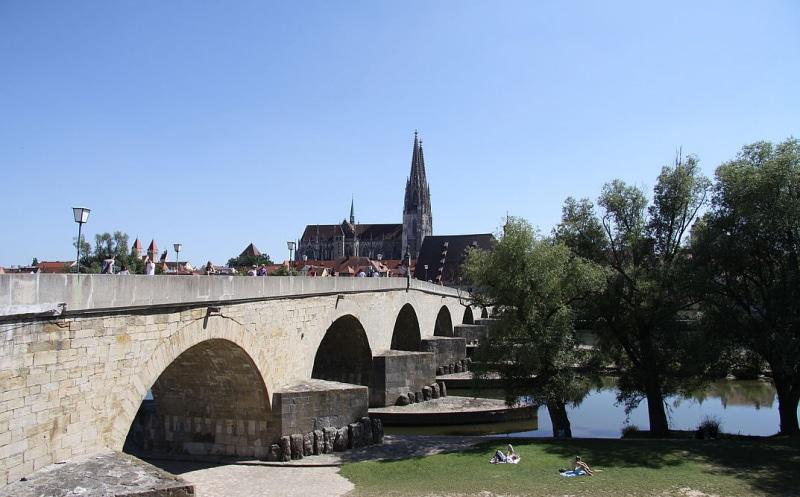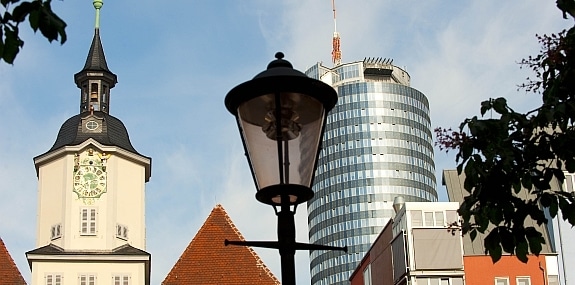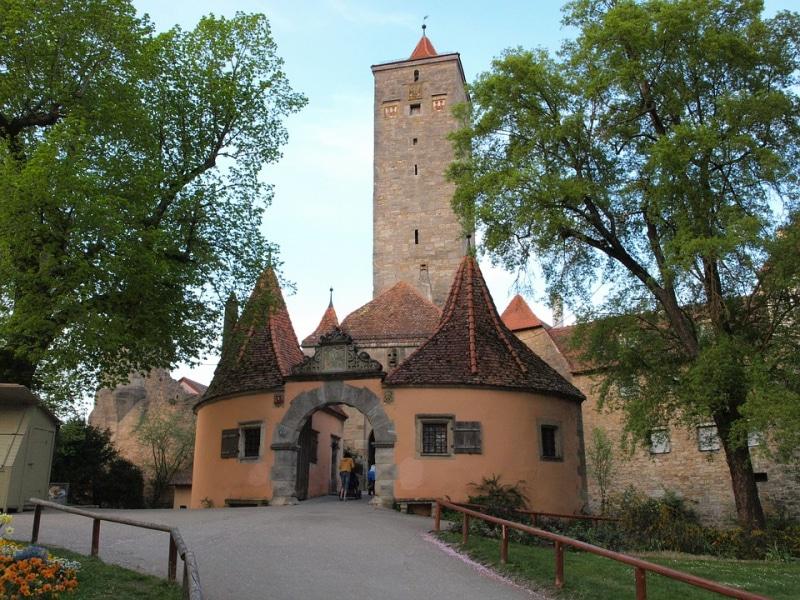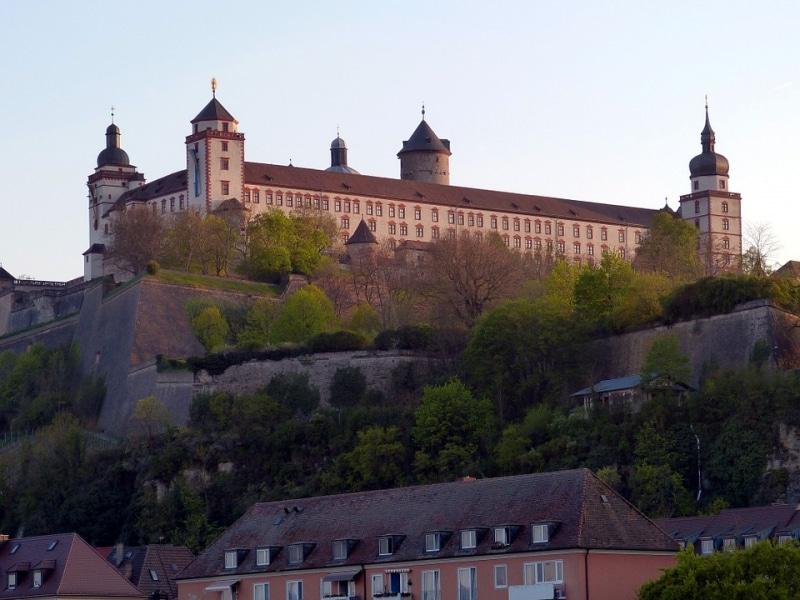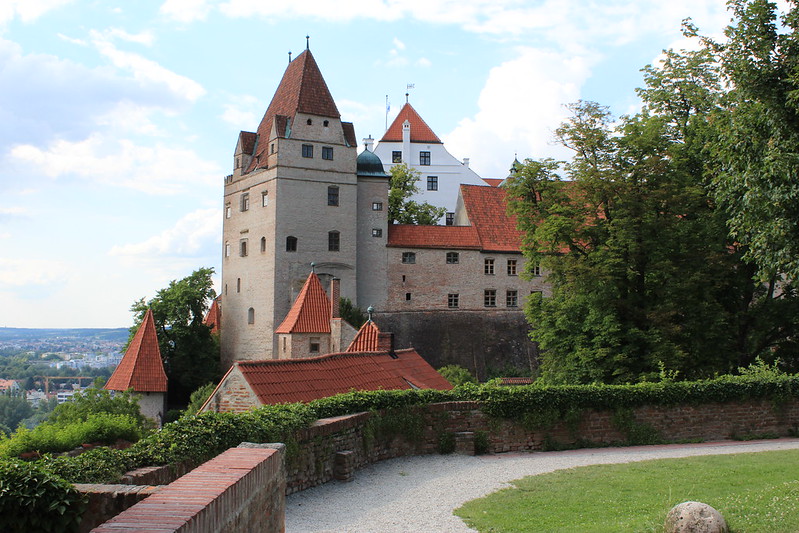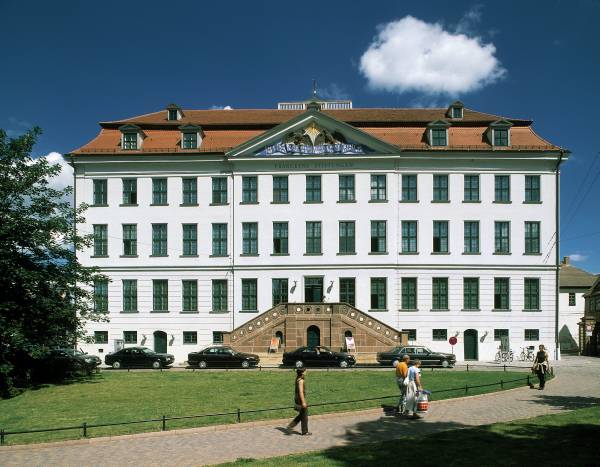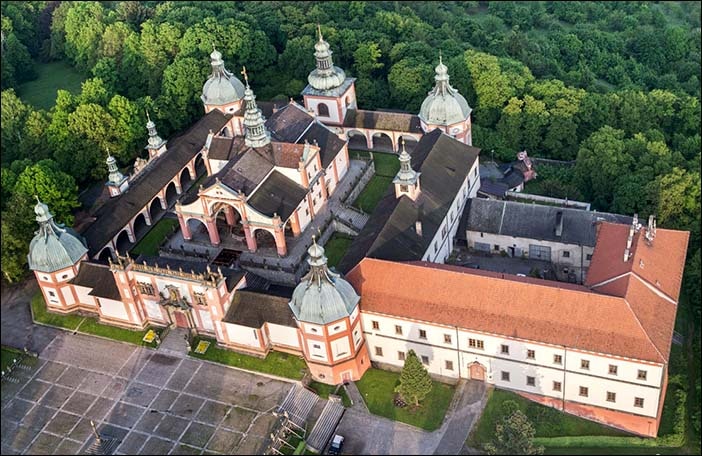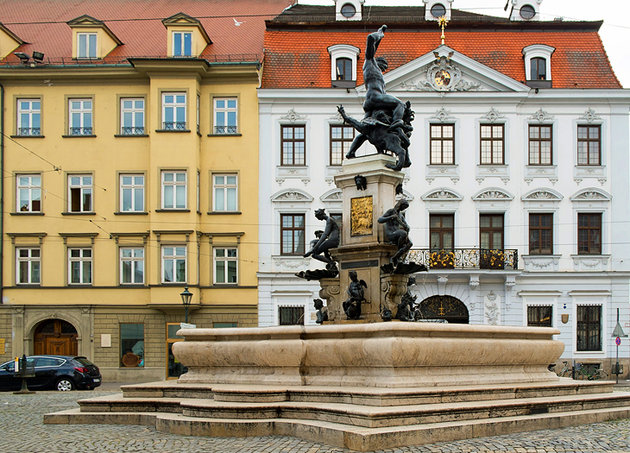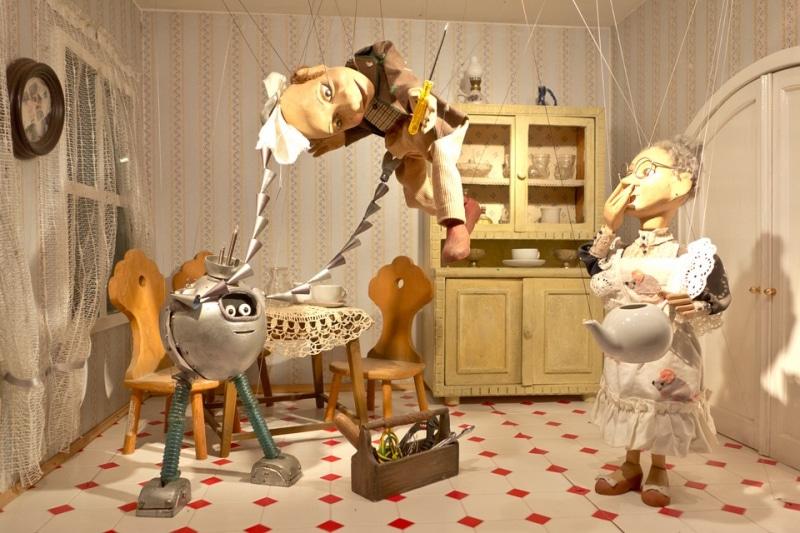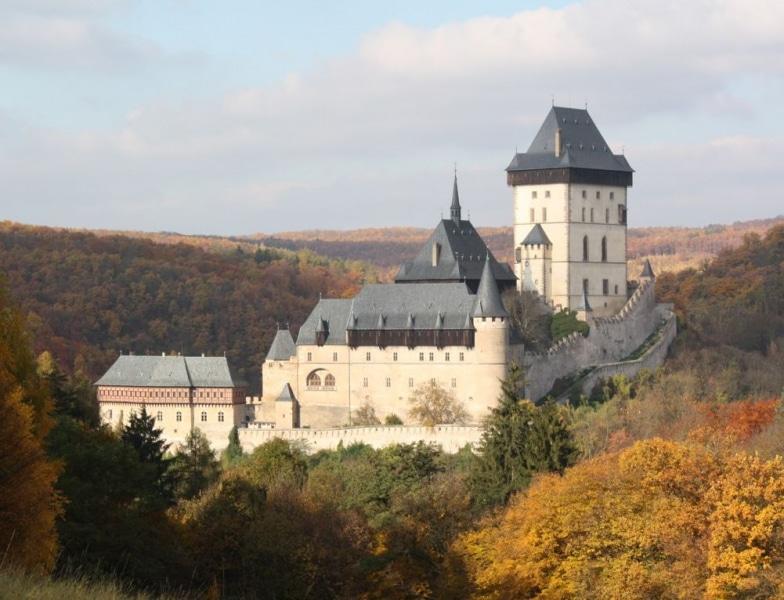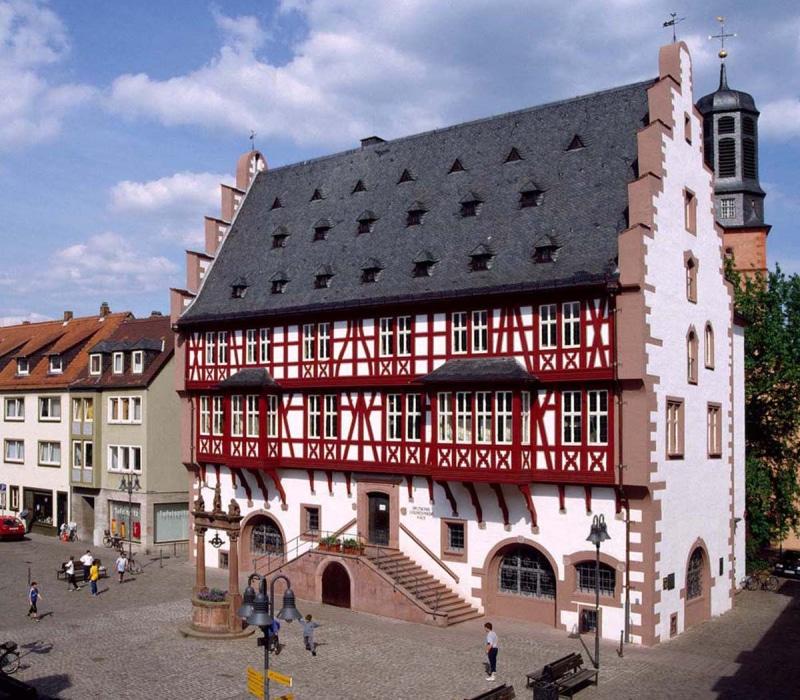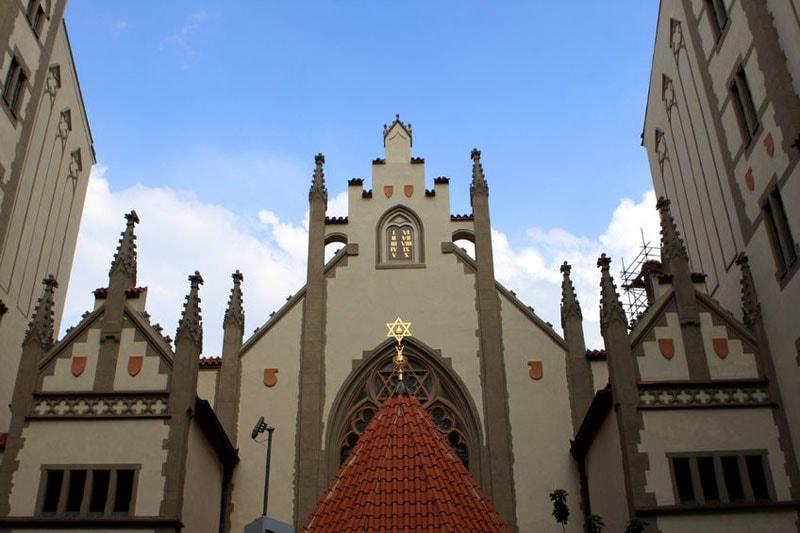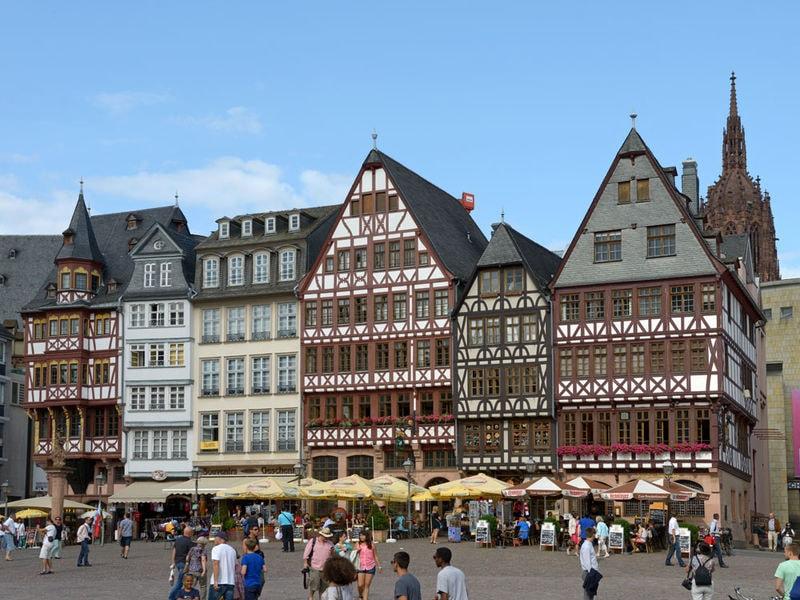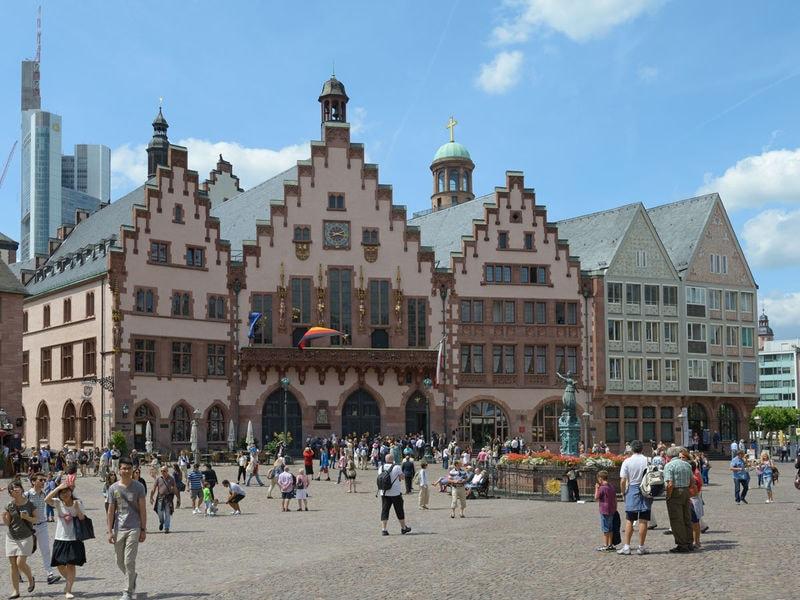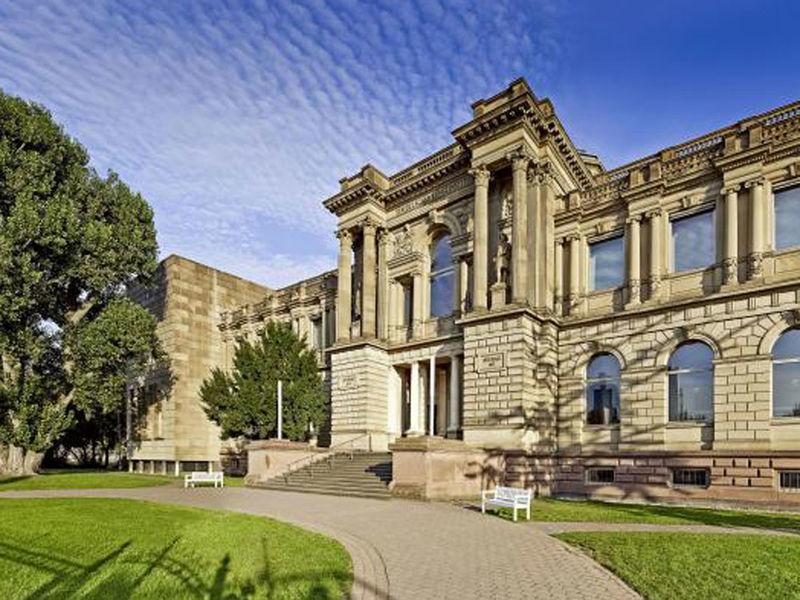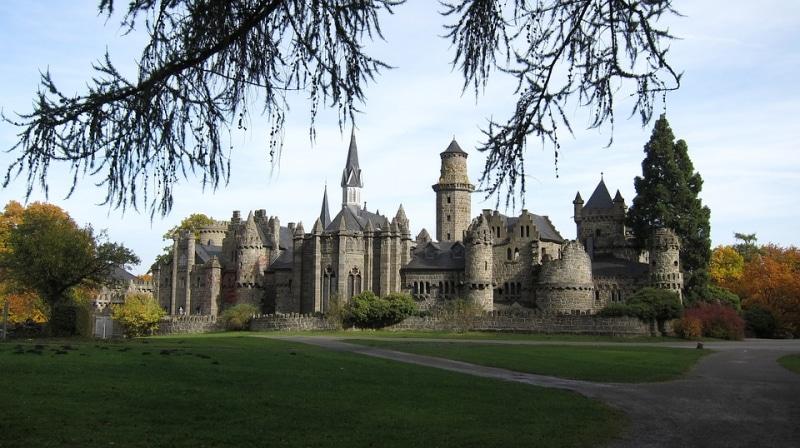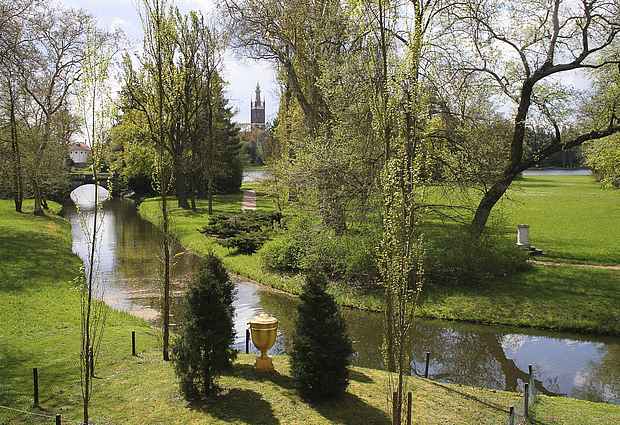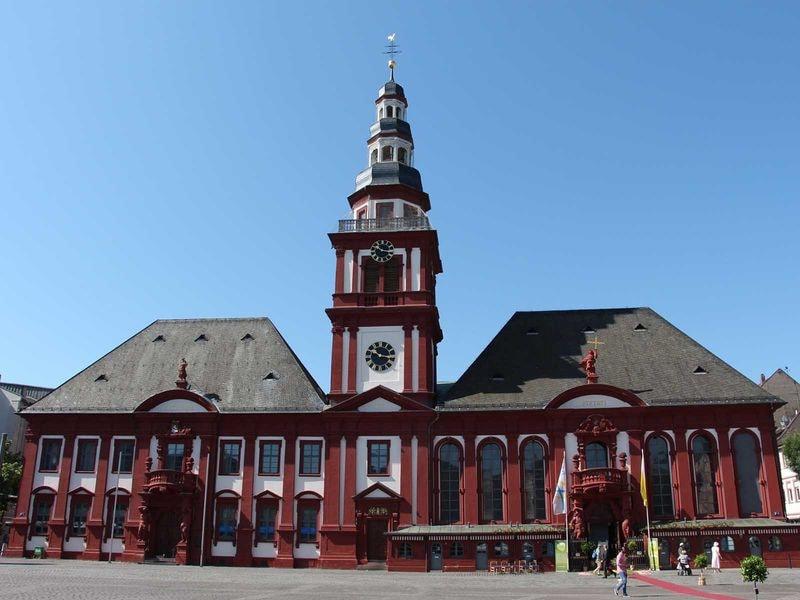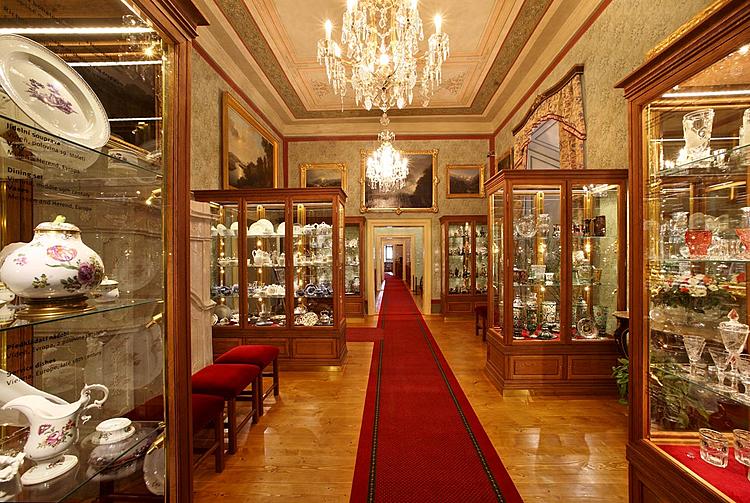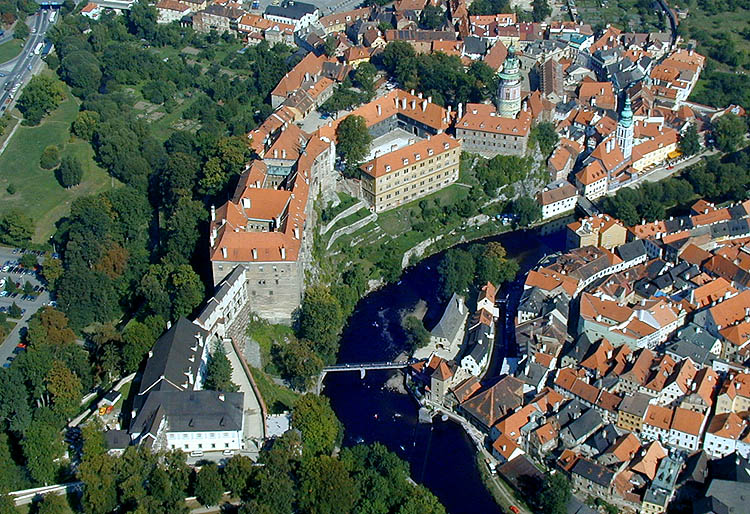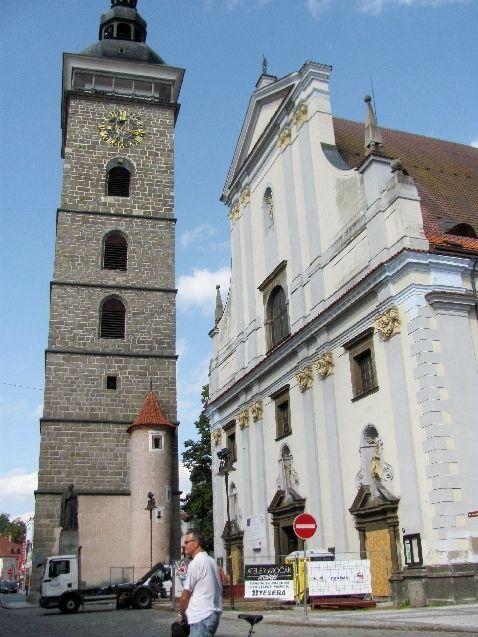HistoricalSites, Bayreuth
Removed from Unnamed collection
Eremitage - Old Palace
Several kilometres outside the town, the Hermitage Palace, which later became known as the Old Palace, dominates the extensive park with its tree-covered slopes that rises above the Roter Main river. http://www.bayreuth-wilhelmine.de/englisch/hermitag/a_schloss.htm
Map
Explore more places related to this search:
Removed from Unnamed collection
Altenburg Castle
Altenburg castle is perched on top of Bamberg's highest hill and is one of Bamberg's major landmarks. https://en.bamberg.info/poi/altenburg_castle-4647/
Map
Removed from Unnamed collection
The Stone Bridge
A Wonder of the World: The Stone Bridge. The people of Regensburg were obviously brilliant bridge-builders way back in the 12th century. The “Bruckmandl” however, the little statue on the bridge, didn’t take up his breezy position there till the middle of the 16th century. https://tourismus.regensburg.de/en/about-regensburg/sightseeing/more-sights-to-explore/architectural-monuments/old-stone-bridge.html
Map
Removed from Unnamed collection
Regensburg Old Town Hall
Today, after numerous additions and alterations, you can admire the three-section building complex dating from the 13th century which consists of the Town Hall tower, the Gothic Imperial Chamber building and the baroque Town Hall. From 1663 to 1806 the Perpetual Imperial Assembly met in the Imperial Chamber. It was there that the well-known expressions “to put something on the long bench” (to postpone something) and “to sit at the green table” (to take important decisions) originated. https://tourismus.regensburg.de/en/about-regensburg/more-sights-to-explore/architectural-monuments/old-town-hall.html
Map
Removed from Unnamed collection
Historic Town Hall
One of the oldest town halls in Germany and witness to the historical change in Jena. Admire the astronomical clock from the 15th century and "Schnapphans" (snatching Hans), one of the "Seven Wonders" of Jena. https://www.jenatourismus.de/en//353228
Map
Removed from Unnamed collection
The Residence Palace
The Residence Palace – The “Castle above all Castles”! The Residence Palace is one of Europe’s most renowned Baroque castles and has been registered as a UNESCO World Cultural Heritage Site in 1981. http://www.wuerzburg.de/en/visitors/must-sees/22688.UNESCO-World-Cultural-Heritage-Site-Residence-Palace.html
Map
Removed from Unnamed collection
Rothenburgs Castle Garden
Where is the castle (or “Burg”) in Rothenburg ob der Tauber? You often hear this question and just as often get disappointed faces in return. Because there hasn’t been a castle in Rothenburg ob der Tauber for a long time – the former Stauferburg was destroyed. However, the disappointment soon vanishes, because in the castle’s location is Rothenburg’s green oasis, the Castle Garden. What’s so special about the Castle Garden? And where in the Castle Garden do you get the best views? We explain why it’s worthwhile to spend some time in Rothenburg’s Castle Garden. https://www.rothenburg-tourismus.de/en/discover/the-highlights-of-rothenburg-ob-der-tauber-top10-sights/a-park-for-taking-a-break-rothenburgs-castle-garden/
Removed from Unnamed collection
Festung Marienberg
The Fortress Marienberg is the most dominating feature of the city; it towers above it all. Take a tour and learn about its history.Fortress Marienberg is visible from seemingly everywhere in Würzburg. http://www.wuerzburg.de/en/visitors/must-sees/22689.Festung-Marienberg-Fortress-Marienberg.html
Map
Removed from Unnamed collection
Zitadelle Petersberg
On June 1st, 1695, the first foundation stone was laid for one of the few remaining 17th century city fortifications to be found in Germany. Today the Petersberg Citadel is an impressive example of European fortification construction dating from the 17th to the 19th centuries. http://www.erfurt.de/ef/en/sightseeing/part2/index.html
Map
Removed from Unnamed collection
Republic square
Pilsen's main square of the Republic is dominated by the beautiful Gothic cathedral of St. Bartholomew with the highest church tower in the Czech Republic. You will find many beautiful historic houses, lots of cafes and restaurants. During the year there are dozens of cultural events, festivals and festivals. https://www.plzen.eu/turista/poznej-plzen/to-nejlepsi-z-plzne/namesti-republiky/namesti-republiky-2.aspx
Map
Removed from Unnamed collection
The New Castle
In 1418, Ludwig the Bearded laid the foundation stone for the Neue Veste (New Citadel), in the centre of which rises the Neues Schloss. Today, 17 richly decorated cannons in the castle courtyard reflect the scale of the weapons arsenal at that time. http://www.ingolstadt-tourismus.de/en/exploreingolstadt/sightseeing/new-castle.html
Map
Removed from Unnamed collection
Kreuztor
The most beautiful of all the city's preserved gates, the cross gate, leads from the west into the Old Town. Four small corner towers and sparingly used limestone decorations embellish the red brick gateway tower from the late 14th century, a Romantic witness to medieval architecture. http://www.ingolstadt-tourismus.de/en/exploreingolstadt/sightseeing/kreuztor-emblem-of-the-city.html
Map
Removed from Unnamed collection
Trausnitz Castle
The castle, located above Landshuts and visible from afar, has only been called "Trausnitz" since the 16th century. Until then, it had the same name as the city itself. According to this, the castle was to grant the country "protection" and protection.
Under Ludwig the Kelheimer, the founder of Burg and Stadt Landshut in 1204 and an important historical figure at the time of the Crusades, the Wittelsbach main castle had grown to the extent of today's core castle. In 1235, when Emperor Friedrich II was visiting Landshut, the castle was essentially completed.
Today the tour takes visitors to the castle through medieval halls such as the impressive vaulted hall of the Alten Dürnitz and the castle chapel with their important sculptural decoration and the winged altars of the rich dukes. Arched cabinets, panelled parlours and the famous stairway with the monumental painted scenes from the Italian Commedia dell'arte represent the era of the Renaissance. The culmination of the castle tour is the view from the Söller on the city. https://www.burg-trausnitz.de/deutsch/burg/index.htm
Map
Removed from Unnamed collection
Franckesche Stiftungen
The orphanage founded in the year 1700 by August Hermann Francke, with its subsequent framework building ensemble, also Europe’s larges framework house, is a remarkable cultural monument at European level with it being included on the list for selection as a world cultural heritage. http://www.halle.de/en/Culture-Tourism/Points-of-Interest/Culture-wherever-o-06059/
Map
Removed from Unnamed collection
Johannisburg Palace
This palace, made of red sandstone, is one of the most significant and beautiful Renaissance buildings in Germany. Its unique features include the chapel (complete with Renaissance altar, pulpit and portal sculptures by Hans Juncker), the royal living quarters, the world's largest collection of architectural models made from cork, the state gallery with paintings by Lucas Cranach the Elder and the Palace Museum of Aschaffenburg that houses works by Ernst Ludwig Kirchner and Christian Schad. https://www.info-aschaffenburg.de/en/tourism/tourist-attractions.html
Map
Removed from Unnamed collection
Chateau Breznice
Originally a water keep, converted in the 16th century into a Renaissance chateau. A renaissance garden, a herb garden, and an English park surround the buildings. http://www.czechtourism.com/c/breznice-chateau/
Map
Removed from Unnamed collection
Svata Hora
Baroque complex Svatá Hora (Holy Hill), the prominent Marian pilgrimage site of Czech Lands with central Basilica of the Assumption of Virgin Mary, is also an outstanding cultural, architectonic and historic monument of the country. http://www.waymarking.com/waymarks/WMVEBY_Svat_Hora_Baroque_Complex_Svat_Hora_u_Prbrami_Central_Bohemia
Map
Removed from Unnamed collection
Schaezler Palace
City residence of the banker Liebert von Liebenhofen with a richly furnished rococo banqueting hall (1765-1770), today Germany’s most important baroque gallery. http://www.augsburg-tourismus.de/augsburg-city.html
Map
Removed from Unnamed collection
Augsburg Puppenkiste (Puppet Theatre)
Die Kiste,” the museum of the Augsburg Puppet Theatre, is found one floor above the theater in the Heilig-Geist-Spital, a former hospital now preserved as an historical monument http://www.augsburg-tourismus.de/augsburg-city.html
Map
Removed from Unnamed collection
Karlstejn Castle
Karlštejn Castle was founded in 1348 by the Charles IV, King of Bohemia and Holy Roman Emperor as his private residence and a place of safekeeping royal treasures, especially his collections of holy relics and the Imperial Crown Jewels. In 1355 Charles IV stayed here for the first time, overseeing the construction and decoration work, especially in chapels. The construction was completed in 1365 when the Chapel of the Holy Cross in the Great Tower was consecrated.
Over the centuries the castle has always been in hands of the king or a state institution, never in private hands. Nowadays it is owned by the state.
Very impressive is the preserved original stair-arrangement of individual castle buildings. The lower section with a small courtyard by the Well Tower and the Burgrave´s House continue through the majestic five-storey Imperial Palace and the Marian Tower. At the highest point, the construction of the castle culminates in a monumental, 60-meter-high Great Tower and its massive fortifications.
A unique original 14th-century wall decoration, a set of 129 paintings created by Master Theodoric in the Chapel of the Holy Cross (the largest in the world), the largest portrait gallery of kings of Bohemia in the Czech Republic, a replica of the royal Crown of Bohemia, a unique castle well. The castle is also famous as a set to a comedy play Night at Karlštejn Castle by Czech poet Jaroslav Vrchlický. https://www.hrad-karlstejn.cz/en/about
Map
Removed from Unnamed collection
Goldsmiths House
Located in the heart of Hanau's historic district, the German Goldsmiths' House was built as the city hall on the Altstädter Markt in 1537-1538 in the style of the late Renaissance Period. http://www.goldschmiedehaus.com/en/goldschmiedehaus/en-historie
Map
Removed from Unnamed collection
Prague's Jewish Quarter (Ghetto)
Prague’s Jewish Quarter (“Židovské město” in Czech) is one of the most impressive places in the capital of the Czech Republic. Josefov, as the quarter is officially named, is at the same time beautiful and wrathful, due to its complicated history. It used to be the largest Jewish ghetto in Europe, and its Old Jewish Cemetery is the most remarkable of its kind on the continent.
Many cities used to have – or still have – the so called “Jewish quarters”, where the Jewish minority lived. Apart from Prague, we can for example name Jerusalem, Seville, or New York. Those quarters were quite often in the form of ghettos. The Jewish quarter of Prague, since 1992 listed as a UNESCO World Heritage site, is definitely one of the most significant ones and if you are visiting Prague, you should definitely see it. Not only as a reminder of a tragic part of the world’s history, but also for its undeniable beauty and charm. http://www.praguego.com/attractions/jewish-quarter/
Map
Removed from Unnamed collection
Emperors Cathedral
The present-day Frankfurt Cathedral was originally a Carolingian chapel. Although called a cathedral since the 18th century, it never was an episcopal church in the true sense. Consecrated in the name of St Bartholomew in 1239, this cathedral was officially chosen to serve as the electoral site for kings of the Holy Roman Empire in 1356. Ten imperial coronations took place here between 1562 and 1792. https://www.frankfurt.de/sixcms/detail.php?id=317578&_ffmpar[_id_inhalt]=5021018
Removed from Unnamed collection
Roemerberg (Ostzeile)
It now represents a classic example of the traditional half-timbered architectural style of times gone by. Every single house bears its own name. In the 17th century, the corner house, named "Grosser Engel", became the home of Frankfurt's first bank. https://www.frankfurt-tourismus.de/en/Discover-Experience/Best-of-Frankfurt2/Roemerberg-Ostzeile
Removed from Unnamed collection
Roemer (City Hall)
This former Patrician Villa, featuring a three-gabled Roof, has served as Frankfurt's city hall since 1405. It continues to be the seat of the city's Lord Mayor to this day.
The city's first town hall was soon too small to accommodate the needs of this flourishing city. It was torn down in 1415 prior to commencement of construction on the cathedral tower. The city council was initially accorded the right to build a new town hall in 1329. Finally, in 1405, the council decided to buy two existing houses instead. These two houses, named "Römer" and "Goldener Schwan", have served as the home of Frankfurt's town hall ever since. Large halls were constructed on the ground level and made available for lease during trade fairs. The Kaisersaal, or "Emperor's Hall", was built around 1612. The town hall complex formerly comprised 13 buildings. There are equally many hypotheses as regards to the origin of the name. One of them states that the merchant who lived there until the building was purchased by the city transacted the majority of his business with Italy, and in particular, Rome. https://www.frankfurt-tourismus.de/en/Discover-Experience/Best-of-Frankfurt2/Roemer-City-Hall
Removed from Unnamed collection
Staedel Museum
Established as a civic foundation in 1815 by the banker and businessman Johann Friedrich Städel, the Städel Museum ranks as Germany’s oldest museum foundation. https://www.frankfurt-tourismus.de/en/Discover-Experience/Best-of-Frankfurt2/Staedel-Museum
Removed from Unnamed collection
The Lions Castle
The Lion's Castle has a picturesque location in the Bergpark Wilhelmshöhe. From afar, it appears to visitors as a romantic knight’s castle from the Middle Ages. However, it was actually built between 1793 and 1801. Conceived as a pseudomedieval 'ancestral castle' by its commissioner, Landgrave Wilhelm IX of Hesse-Cassel, later Prince Elector Wilhelm I, Heinrich Christoph Jussow, the court’s master architect, realised the bold plans. http://www.kassel.de/englisch/culture/museums/02146/index.html/
Map
Removed from Unnamed collection
Garden Kingdom Dessau-Woerlitz
His principality was small, his ideas were big. Leopold III. Friedrich Franz, enlightened prince and duke of Anhalt-Dessau (1740 -1817), wanted to combine the "useful with the beautiful". https://tourismus.dessau-rosslau.de/welterbe/gartenreich-dessau-woerlitz.html
Map
Removed from Unnamed collection
Old Town Hall and St. Sebastian Church
The baroque backdrop for the market held here three times a week is formed by the ensemble of the old town hall and the parish church of St. Sebastian - which is incidentally Mannheim's oldest building. If you happen to lose track of time in the hustle and bustle of the market, two clocks and a bell tower are on hand to bring you back to the here and now. What's more, a glockenspiel sounds from the tower three times a day, charming more people than merely the wedding couple exchanging vows inside the walls.
You can immerse yourself in Mannheim's internationality directly behind the marketplace. The predominantly Turkish-influenced district with its small shops and delicacies like baklava and pide can easily turn your thoughts to your next holiday. The huge selection of bridal and evening wear on offer here draws customers from over 150 kilometers away. https://www.visit-mannheim.de/en/Media/attractions/old-town-hall-and-st.-sebastian-church
Map
Removed from Unnamed collection
Baroque palace Mannheim
The imposing baroque palace with its impressive size is not without reason the largest Baroque palace in Germany. Stroll across the wide Ehrenhof, be impressed in the former State Rooms and the Castle Church or enjoy the student bustle of the University of Mannheim, which is located in the castle. https://www.visit-mannheim.de/Media/attraktionen/barockschloss-mannheim
Map
Removed from Unnamed collection
Jewish Museum Worms
There was a Jewish Community in Worms for an uninterrupted period lasting more than 900 years. Many architectural reminders have survived and bear witness today to the former importance of Jewish Worms. https://www.worms.de/en/tourismus/museen/juedisches_museum/
Map
Removed from Unnamed collection
Castle Museum & Castle Tower
The new Castle Museum exhibition was opened in 2011 by the National Heritage Institute. Museum visitors have a unique opportunity to peek into the secrets of the castle depositories relating to the most important events connected with the Rožmberk, Eggenberk and Schwarzenberg owners of the Krumlov estate. Entry to the Castle Museum exhibition is individual, without a guide but with the option to rent an audioguide. This rounded six-storied tower, surrounded by the residential palace of the Little Castle, is situated on a narrow rocky promontory towering above Latrán and the Vltava River between the Ist and IInd Courtyard of Český Krumlov Castle. The origins of this structure are partly Gothic and partly Renaissance, as is evident from the tower's external appearance. The tower as well as the Little Castle is a segment of a structure dating from the first half of the 13th century. Castle Tower The oldest part of it is the groundfloor and first floor. The origin of the second floor is around the 14th century, while the third floor is part of the Renaissance belfry. We can not eliminate the Gothic origin, however, due to the bell dated 1406. Under the architect Baldassare Maggi of Arogno, the castle was remodelled and converted from a plain Gothic palace into a Renaissance residence, and the tower was provided with an arcaded gallery at the top in 1581. In 1590 the tower was decorated with mural paintings and figural and architectural motifs by Bartoloměj Beránek - Jelínek. Castle Tower The Tower is the symbol of the town of Český Krumlov, of its history and beauty. It is "The towerest of all towers" as once characterised by Karel Čapek. The tower is publically accessible and offers a beautiful view over Krumlov and surroundings. https://www.zamek-ceskykrumlov.cz/en/visitors-information/tours/1077-castle-museum-and-castle-tower
Map
Removed from Unnamed collection
Cesky Krumlov State Castle
Český Krumlov State Castle with its architectural standard, cultural tradition, and expanse ranks among the most important historic sights in the central European region. Originally Gothic castle from 13th century was enlarged in 14th century and it was rebuit in the Renaissance style in 16th century. http://www.ckrumlov.info/docs/en/atr3.xml
Map
Removed from Unnamed collection
Black tower
The Renaissance tower originally served as a watchtower and belfry. The building structure is 71.9 m tall and holds 5 bells and a clockwork. Once you conquer 225 stairs (height of 45 m) you will be rewarded with a strikingly beautiful view of České Budějovice and the surroundings. http://en.inbudejovice.cz/13_53197_black-tower-ceske-budejovice/
Map




